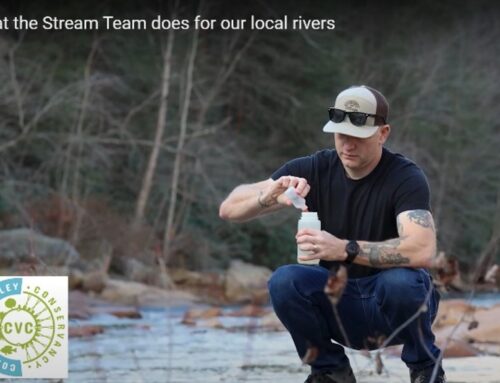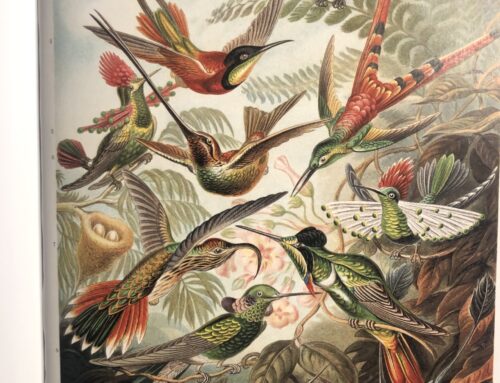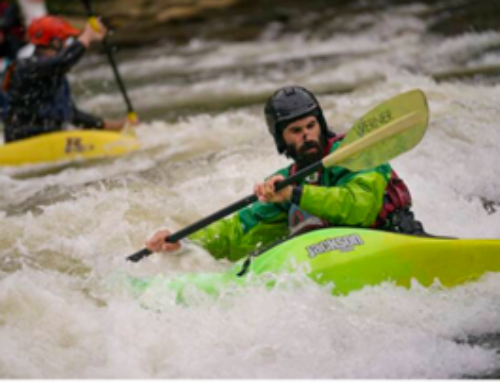Mother Nature has not yet put away her claws, but we know the coldest months are behind us now. This is a little sad for those of us who like to see the way ice forms and melts because we won’t see much more of it this year. Keeping an eye out for interesting ice phenomena is rewarding.
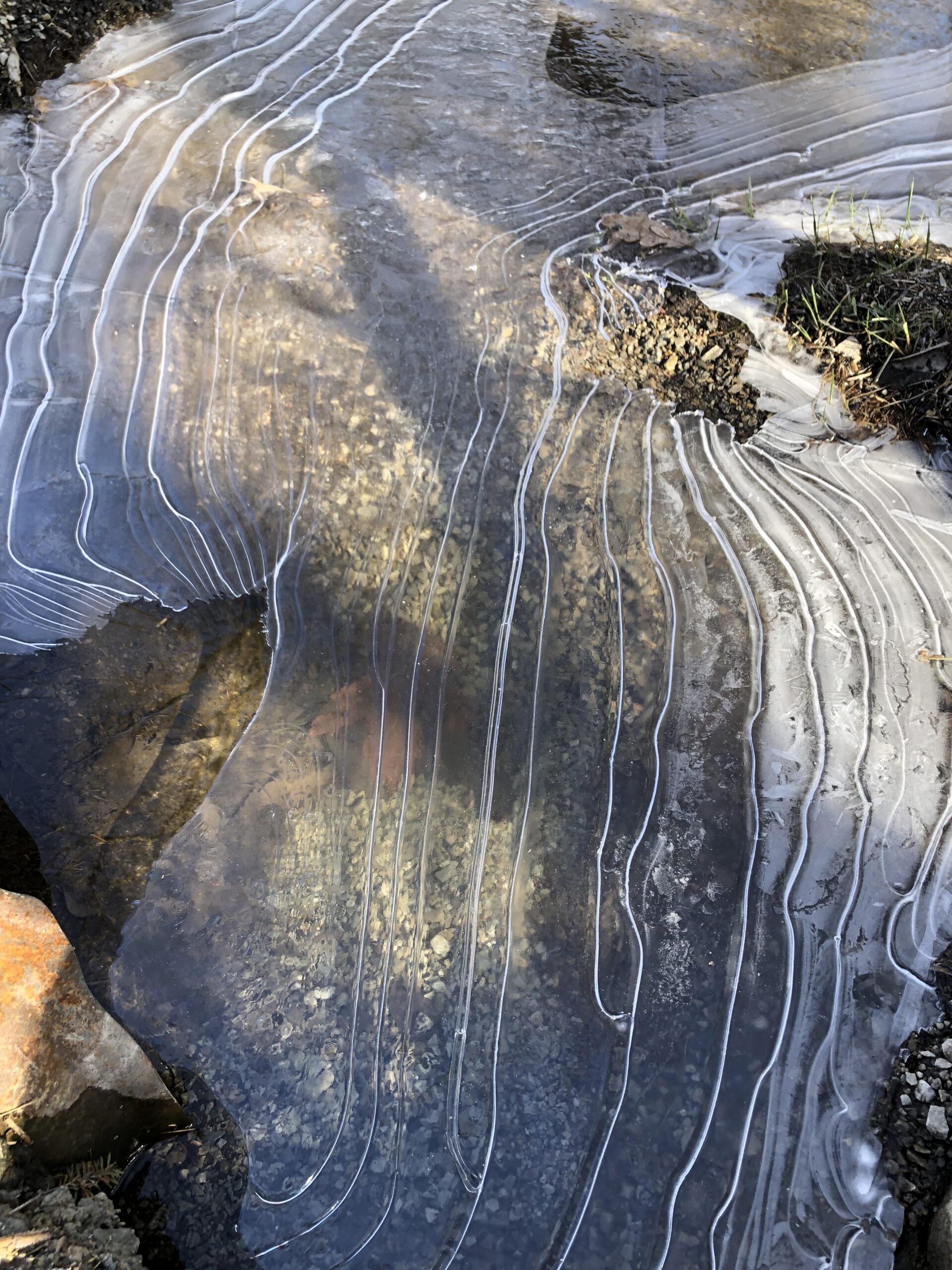
An air pocket under the crust of ice on top of a puddle shows how the puddle shrank.
This kind of puddle is a traditional favorite. Most every child likes to break the surface where the ice is above an air pocket. Some adults never grow out of that affection. This kind of ice forms when a cold night freezes the top of the puddle and some of the water below drains away. If the draining happens in steps, sometimes that shows in the underlying ribs of ice that look like growth rings. Really, they are shrink rings, showing where the puddle was previously when larger before shrinking more.
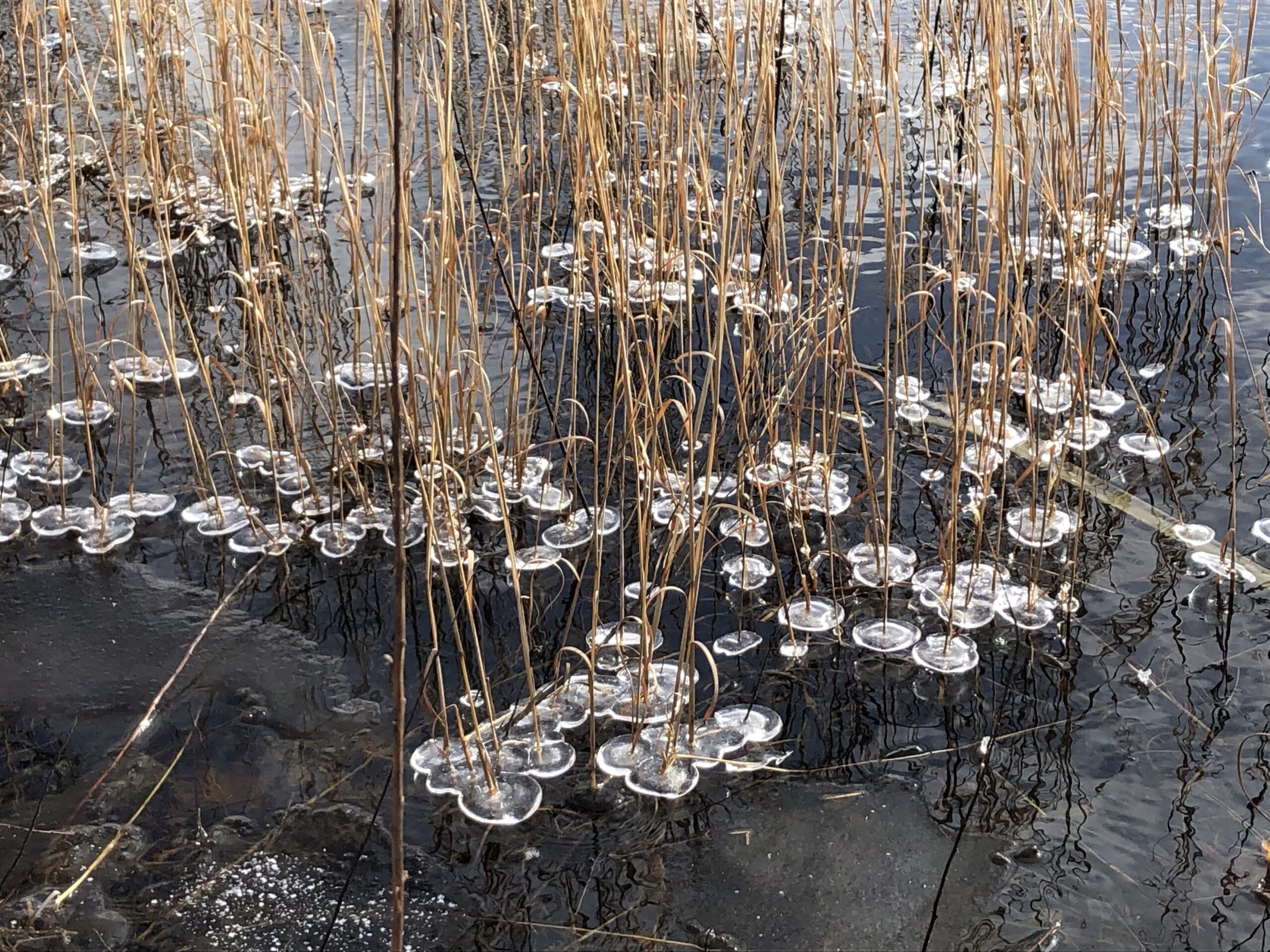
Small ripples on a lake surface can produce disks of ice on emergent vegetation.
As small ripples on a peaceful lake coat emerging grass with a film of water, a cold night freezes that water where the ripples top out. The next ripple deposits more water to freeze at the same level. Eventually this may create a disk of ice just a few millimeters above the water level. This image is from March at Lake Somerset.
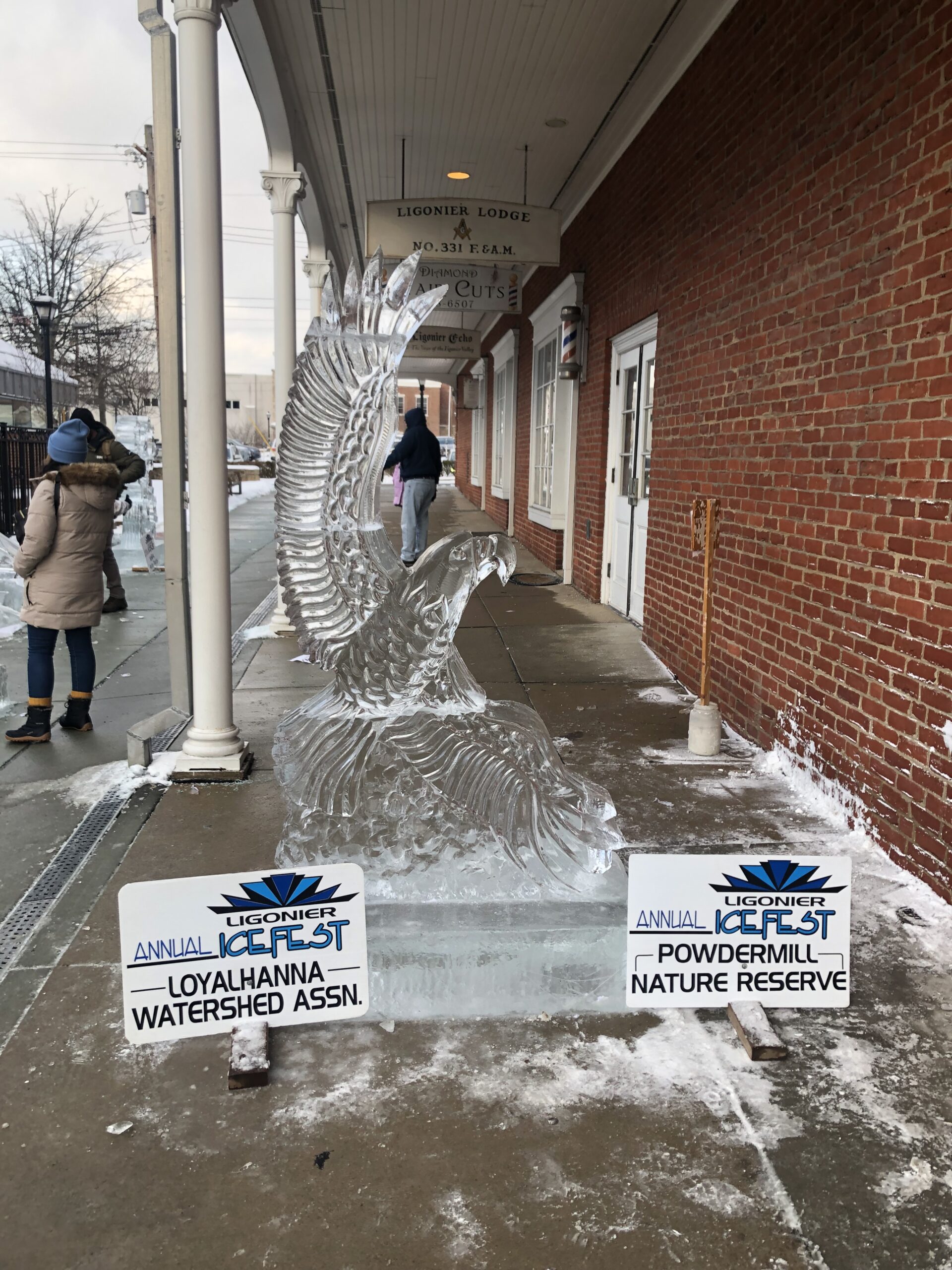
This large eagle was sponsored jointly by two environmental nonprofits.
The January Ligonier Ice Festival is a midwinter treat. Scores of area companies and nonprofits sponsor ice sculptures. Upon carving, the ice is uniformly clear, very transparent. Set all around Ligonier’s central town square, called “the diamond,” some of these sculptures are on the sunny side of the street and some on the shady side. The ice ages differently when in the sun versus the shade.
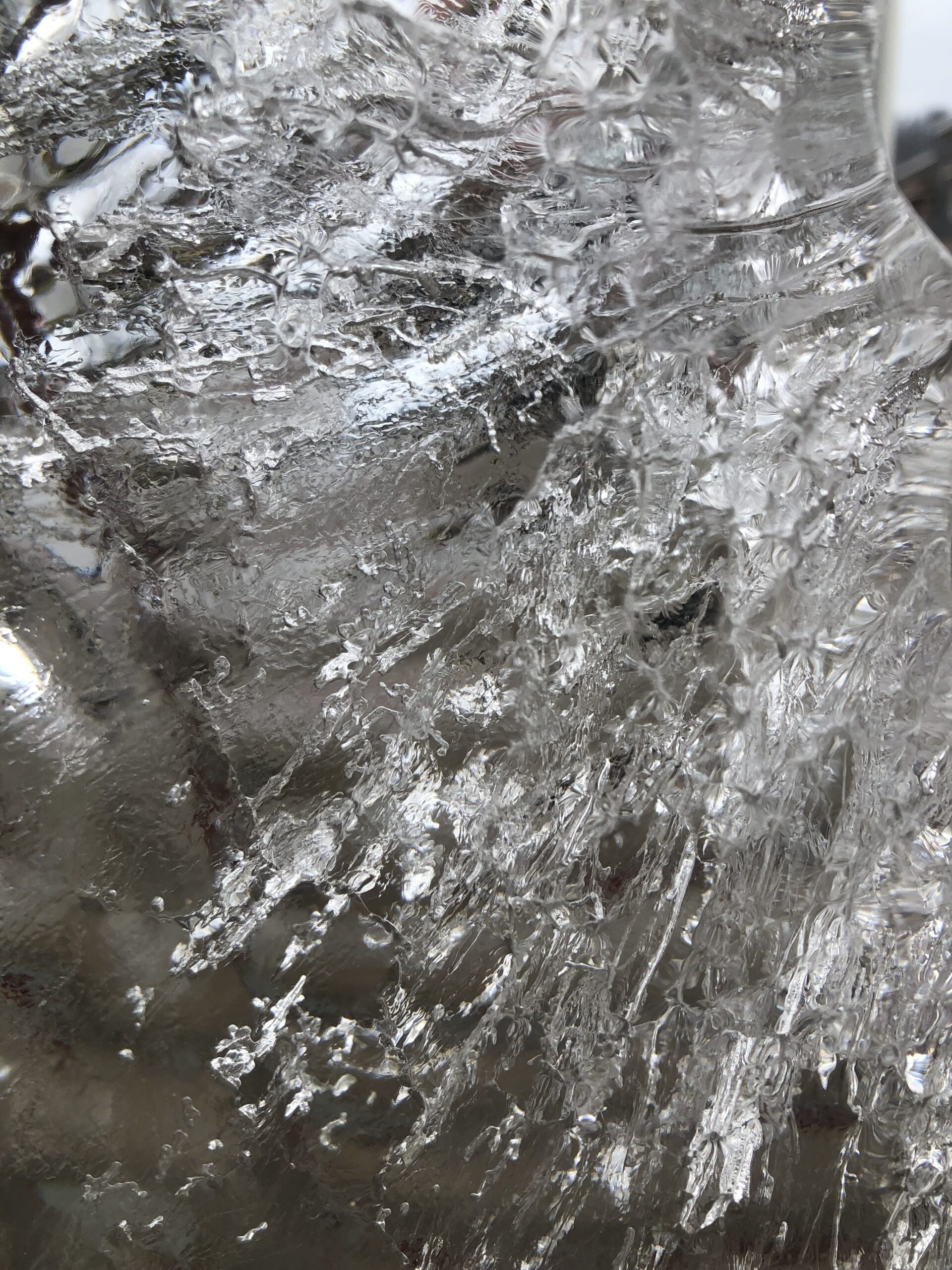
Where sunlight shines on the ice, air bubbles form and craze the ice.
As days pass, sunlight creates bubbles in the ice that show up as white spots, crazing the ice with pale streaks and spots. This happens either not at all or much more slowly in the sculptures that are always in the shade. Why does the ice age differently between sun and shade? Perhaps, the light adds energy to the ice as it passes through, and the air that is dissolved in the ice unites to make little bubbles. If you understand the physics of this, please write and explain!
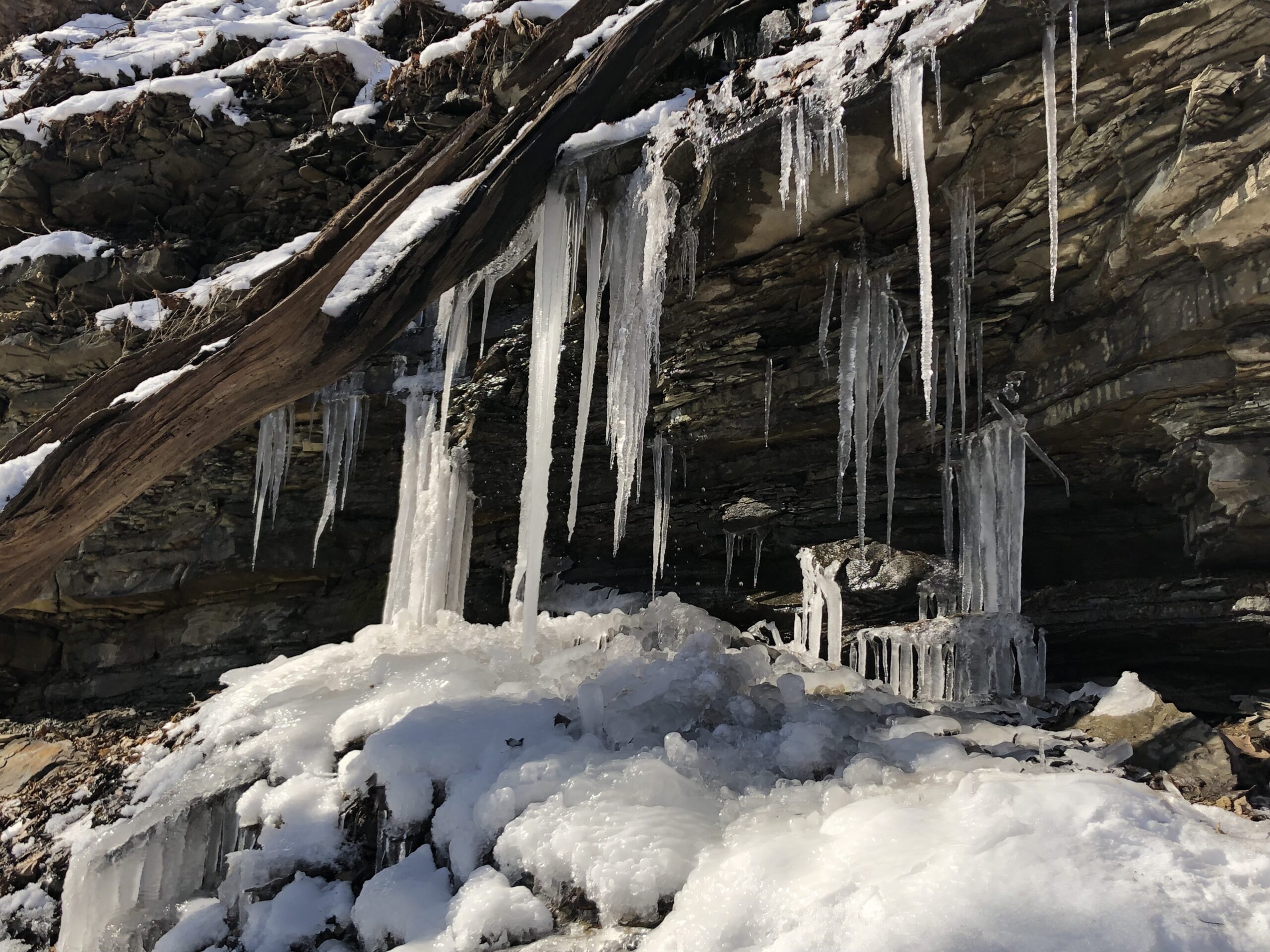
Icicles partly block an old mine vent.
Of course, the classic ice formation is icicles. Endless in forms, they can be very beautiful, while these make a bit of a macabre image across an old mine vent. The TV show Mythbusters demonstrated that large icicles from a certain height could accidentally kill a person. More intentionally, mystery writer Alfred Hitchcock said his favorite murder weapon was an icicle: no fingerprints, very soon no weapon.
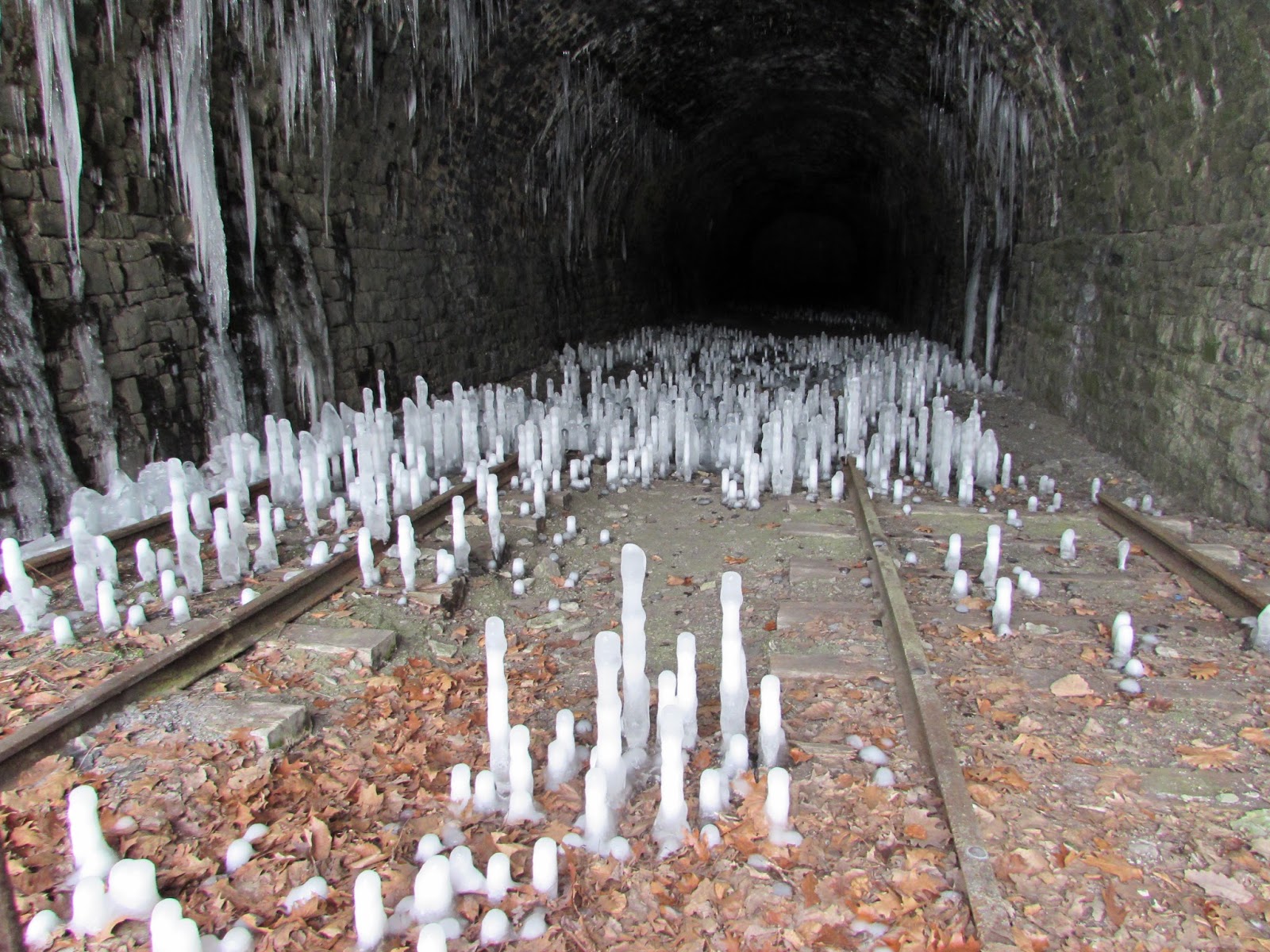
Water dripping from the ceiling of a tunnel may create a cityscape of stalagmites.
This is an abandoned train tunnel on the West Penn Trail, a premier rails-to-trails cycling trail along the Conemaugh River. An extended cold snap will freeze water dripping from the warmer ceiling of the tunnel to form ice stalagmites on the floor. This is an historic, early railroad tunnel, and the small town nearby is called Tunnelton. For some of us, the miniature cityscape of ice skyscrapers in the tunnel is the real Tunnelton.
Image from https://www.interestingpennsylvania.com/

